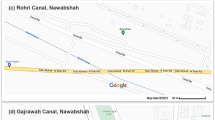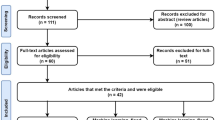Abstract
Fuzzy integral transforms are simpler and the most popular mathematical methods to solve differential and partial equations as well as integral equations. A lesser-known data fusion approach, the fuzzy integral, has been applied in many fuzzy applications, and a comprehensive body of sound mathematical theory is presented alongside it. In this study, a new fuzzy transformation derived from the fuzzy Laplace transform, but more broadened in terms of the center, was shown, and the proposed first- and second-degree transformation and third-order fuzzy derivative formula are discovered. A general formula of nth-order fuzzy derivative e(FNT) is obtained using highly generalized H-differentiability notions. The Internet of Things (IoT) global advancement has improved the tradition of data collection for groundwater resource management. Additionally, information about changes in groundwater resources along with their accessibility is crucial for effective data-driven sustainable groundwater management. In this research work, sustainable groundwater management can be implemented using IoT and artificial intelligence (AI). Finally, a real-world example (liquid tank system) is illustrated to show the effectiveness of this fuzzy N-transform and applied for enhanced sand-dune image detection. From the results, it can be foreseen that the proposed method is exclusively suitable for sustainable groundwater management.


Similar content being viewed by others
Data availability
Based on the request, authors can provide.
References
Abbas ST, Alkiffai AN, Albukhuta AN (2021) Solving a circuit system using fuzzy Aboodh transform. Turk J Comput Math Edu 12(12):3317–3323
Bagnold RA (2012) The physics of blown sand and desert dunes. Courier Corporation
Fadhil AM (2009) Land degradation detection using geo-information technology for some sites in Iraq. J Al-Nahrain Univ Sci 12(3):94–108. https://doi.org/10.22401/JNUS.12.3.13
Haydar AK, Hassan RH (2016) Generalization of fuzzy Laplace transforms of fuzzy fractional derivatives about the general fractional order. Mathematical Problems in Engineering, Hindawi 2016:1–13
Jassim SZ, Goff JC (2006) Geology of Iraq. DOLIN, sro, distributed by Geological Society of London 8(5)
Lee M, Yeh C (2009) Applying remote sensing techniques to monitor shifting wetland vegetation: a case study of Danshui River estuary mangrove communities Taiwan. EcolEng 35:487–496. https://doi.org/10.1016/j.ecoleng.2008.01.007(Accessedon8/6/2020)
Levin N, Ben-Dor E (2004) Monitoring sand dune stabilization along the coastal dunes of Ashdod-Nizanim, Israel, 1945–1999. J Arid Environ 58(3):335–355. https://doi.org/10.1016/j.jaridenv.2003.08.007
Li X, Chen Y, Liu X, Xu X, Chen G (2017) Experiences and issues of using cellular automata for assisting urban and regional planning in China. Int J Geogr Inf Sci 31:1606–1629. https://doi.org/10.1080/13658816.2017.1301457(Accessedon8/6/2020)
Mandhare RA, Upadhyay P, Gupta S (2013) Pixel-level image fusion using Brovey transform and wavelet transform. Int J Adv Res Electr Electron Instrum Eng (IJAREEIE) 2(6):2690–2695
Mondini G (2016) Integrated assessment for the management of new social challenges. Valori e Valutazioni 17:15–18
Moradi S, Yousefi H, Noorollahi Y, Rosso D (2020) Multi-criteria decision support system for wind farm site selection and sensitivity analysis: case study of Alborz Province Iran. Energ Strat Rev 29:100478
Padwick C, Deskevick M, Pacifici S, Smallwood S (2010) Worldview-2 Pan-sharpening. ASPRS 2010 Annual Conference, San Diego
Puri ML and Ralescu D (1983) Differential for fuzzy function. J Math AnalAppl
Sleibi and Alkiffai (2020) AN Solving ordinary differental equations using fuzzy transformation. Msc. Theses, Kufa University, Thesis Publication
Xiong Z, Guo Q, Liu M, Li A (2021) Pan-sharpening based on panchromatic colorization using WorldView-2. IEEE Access 9:115523–115534
Author information
Authors and Affiliations
Contributions
There is no authorship contribution.
Corresponding author
Ethics declarations
Ethics approval and consent to participate
No participation of humans takes place in this implementation process.
Human and animal rights
No violation of human and animal rights is involved.
Conflict of interest
The authors declare no competing interests.
Rights and permissions
Springer Nature or its licensor (e.g. a society or other partner) holds exclusive rights to this article under a publishing agreement with the author(s) or other rightsholder(s); author self-archiving of the accepted manuscript version of this article is solely governed by the terms of such publishing agreement and applicable law.
About this article
Cite this article
Kadham, S.M., Mustafa, M.A., Abbass, N.K. et al. IoT and artificial intelligence–based fuzzy-integral N-transform for sustainable groundwater management. Appl Geomat 16, 1–8 (2024). https://doi.org/10.1007/s12518-022-00479-3
Received:
Accepted:
Published:
Issue Date:
DOI: https://doi.org/10.1007/s12518-022-00479-3




